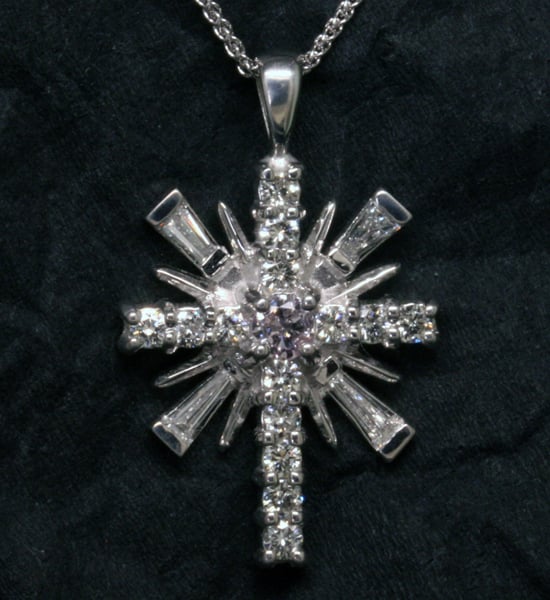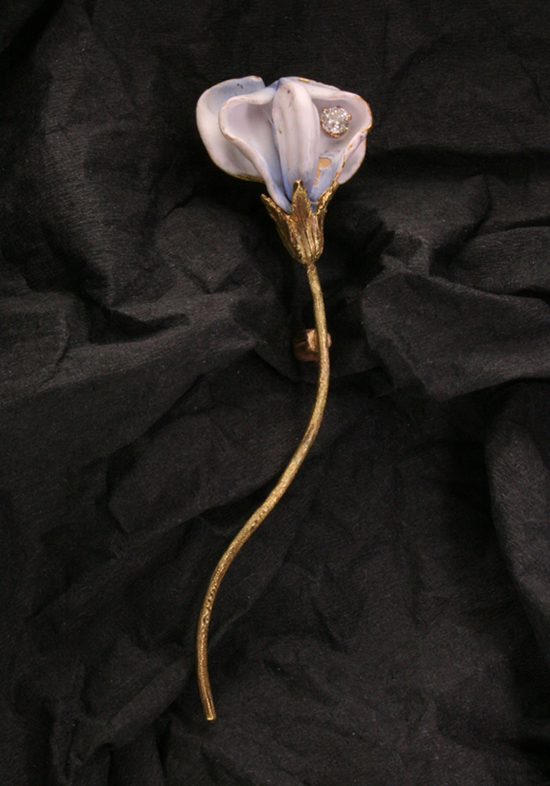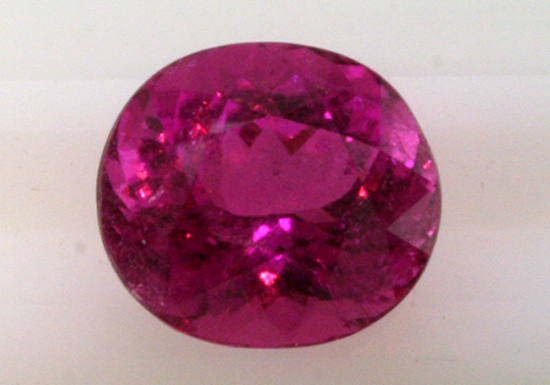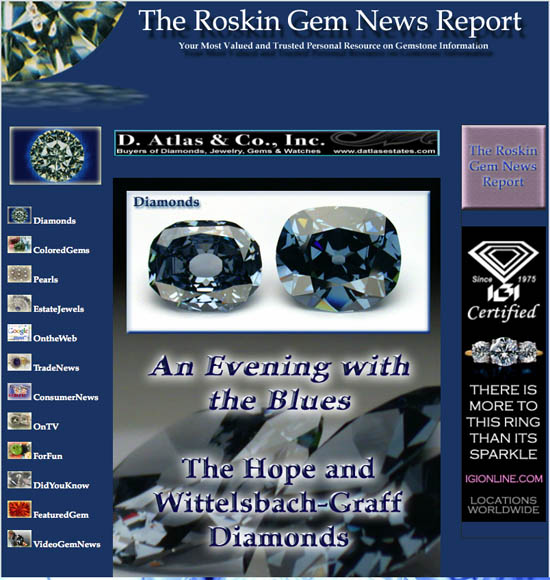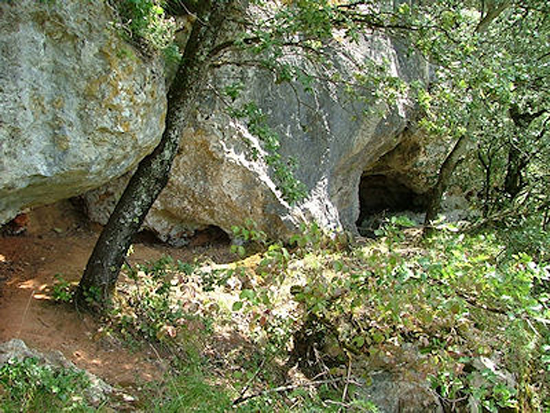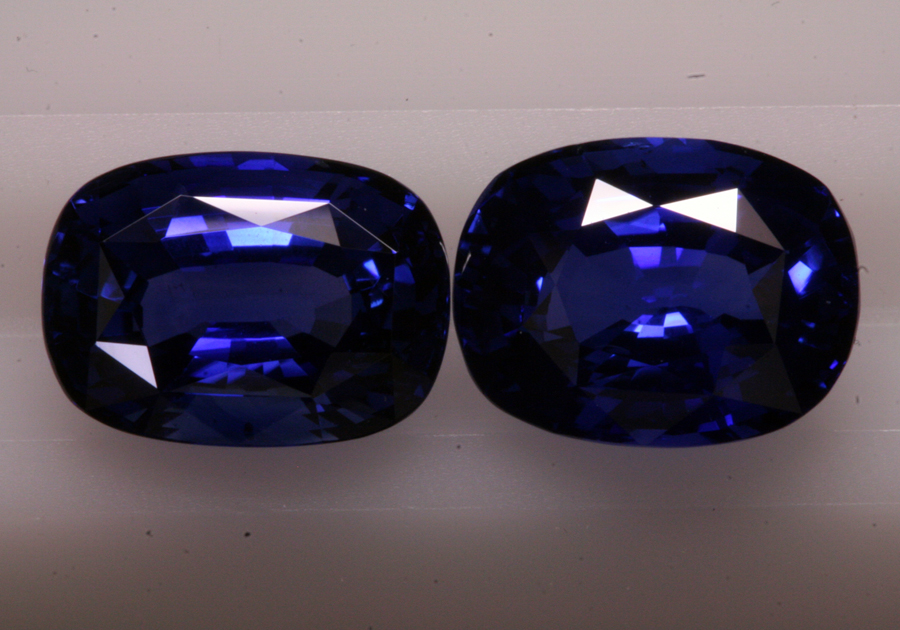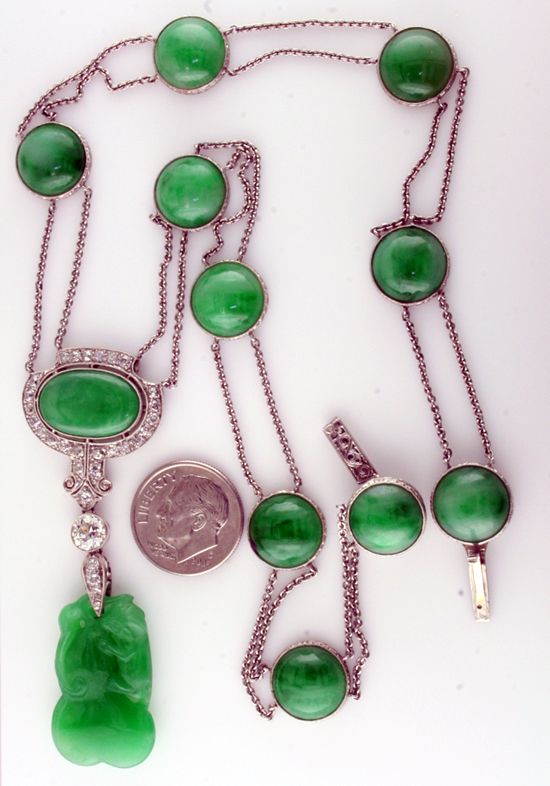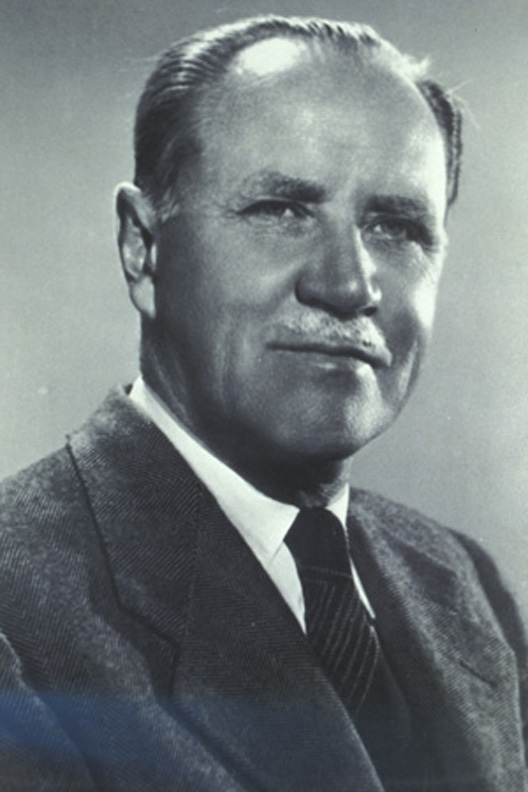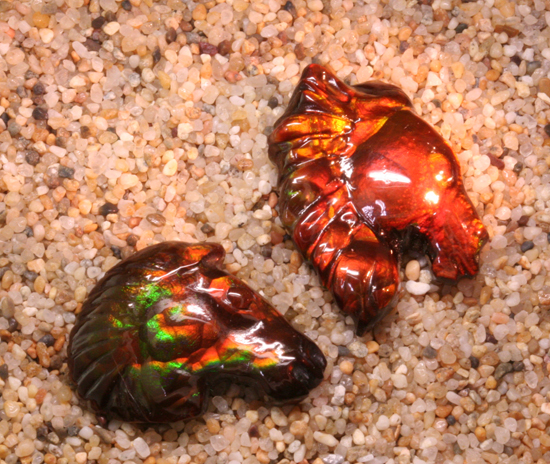The gem auction world is all a-twitter over this outstanding emerald cut diamond offered at the Sotheby’s Auction, November 16 in Geneva, Switzerland. Graded Fancy Intense Pink, the diamond is also unusually high in clarity, pronounced VVS2 by GIA. Described as pure pink with no secondary hues, the pre-auction estimate for this ultra-rare gem is is a sizzling hot 27,000,000–38,000,000! Wow!
For an affordable natural color pink diamond, consider this just-completed Mardon pendant, designed by Jim and Jenny Sweaney. We created this one-of-a-kind jewel with all re-cycled gold and recycled diamonds, including the .19 ct. center round, a very nice natural pink we discovered hidden in a flush setting of an estate ring we purchased.
Natural color diamonds are one of the rarest of all gems. For the most part, the natural yellow, pink, and blue colors we occasionally see in diamond are delicate pastel shades. Many of the colors are combinations of hues. sometimes desirable, sometimes not. Many natural pink diamonds have brownish overtones and many natural blue diamonds have a grayish or steely look.

